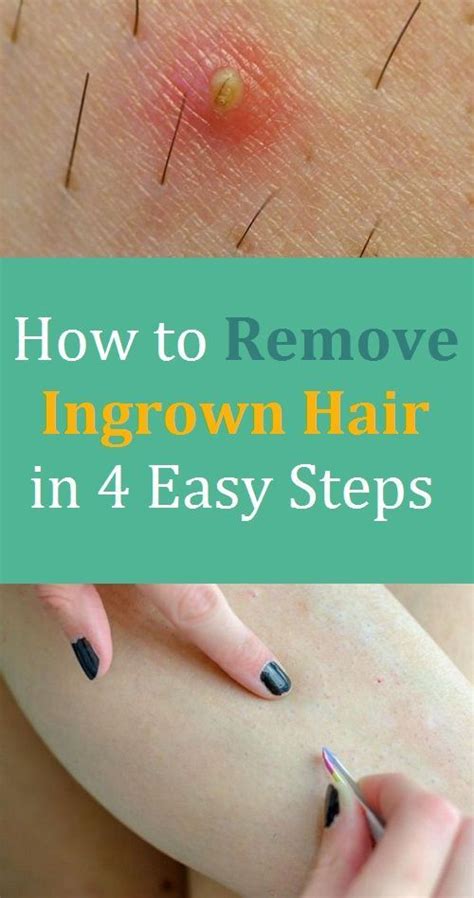How to Get Rid of Ingrown Hairs: A Comprehensive Guide
Ingrown hairs are a common and frustrating skin problem, occurring when a hair curls back and grows into the skin instead of out. This can cause redness, inflammation, itching, and sometimes even painful bumps. Fortunately, there are several effective ways to treat and prevent ingrown hairs. This guide will provide you with practical tips and techniques to banish those pesky ingrown hairs for good.
Understanding Ingrown Hairs
Before diving into solutions, it's crucial to understand what causes ingrown hairs. Several factors contribute to their formation:
- Hair type and shaving techniques: Curly or coarse hair is more prone to ingrowing. Improper shaving techniques, such as shaving against the grain or using dull razors, significantly increase the risk.
- Dead skin cells: A buildup of dead skin cells can trap hairs beneath the surface, preventing them from emerging.
- Tight clothing: Tight-fitting clothing can irritate the skin and trap hairs, promoting ingrown hairs, especially in sensitive areas.
Effective Treatments for Ingrown Hairs
Now, let's explore the most effective methods for dealing with existing ingrown hairs:
1. Exfoliation: The Key to Prevention and Treatment
Gentle exfoliation is paramount. It helps remove dead skin cells, allowing the trapped hair to break free. Use a gentle scrub or exfoliating mitt a few times a week, focusing on areas prone to ingrown hairs. Avoid harsh scrubs, as they can further irritate the skin.
2. Warm Compress: Soothe and Soften
Applying a warm compress to the affected area for 10-15 minutes can soften the skin and help the hair emerge. This simple technique can be incredibly effective, especially when combined with other methods.
3. Tweezers: A Careful Approach
If you can see the ingrown hair beneath the skin's surface, carefully use sterilized tweezers to gently pull it out. Ensure your tweezers are clean to prevent infection. Do not dig or force the hair, as this can worsen the inflammation and potentially cause scarring.
4. Over-the-Counter Treatments: Creams and Lotions
Several over-the-counter creams and lotions contain ingredients like salicylic acid or benzoyl peroxide, which can help exfoliate the skin and reduce inflammation. Follow the product instructions carefully.
5. Leave it Alone: When to Resist the Urge
Sometimes, the best approach is to leave the ingrown hair alone. Resist the urge to pick or squeeze it, as this can lead to infection and scarring. If the ingrown hair is causing significant pain or inflammation, consult a dermatologist.
Preventing Ingrown Hairs: Proactive Steps
Preventing ingrown hairs is far easier than treating them. Here are some preventative measures:
1. Proper Shaving Techniques: Shave Smart
- Use a sharp razor: Dull razors increase the risk of ingrown hairs.
- Shave in the direction of hair growth: Shaving against the grain can lead to irritation and ingrown hairs.
- Lubricate well: Use shaving cream, gel, or soap to reduce friction.
- Rinse thoroughly: Remove all traces of shaving cream or gel.
2. Exfoliate Regularly: Keep Skin Clear
Regular exfoliation prevents the buildup of dead skin cells, reducing the likelihood of trapped hairs.
3. Moisturize: Hydrated Skin is Healthier Skin
Keep your skin well-moisturized to prevent dryness and irritation.
4. Consider Alternative Hair Removal Methods: Explore Options
If shaving consistently causes ingrown hairs, consider alternative hair removal methods like waxing, laser hair removal, or epilating. These methods may be less prone to ingrown hairs but can also cause irritation if not done properly.
When to See a Dermatologist
While most ingrown hairs can be treated at home, consult a dermatologist if:
- You have persistent or severe ingrown hairs.
- The ingrown hair is infected (signs include increased pain, swelling, pus, or redness).
- You develop scarring.
By following these tips and techniques, you can effectively manage and prevent ingrown hairs, keeping your skin smooth and clear. Remember, patience and consistency are key to achieving long-term results.
